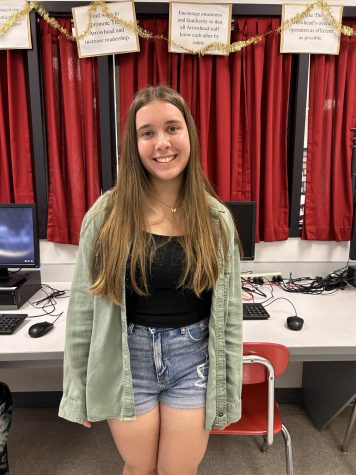New bus cameras aim to capture violators
By installing additional cameras on the bus fleet, Souderton hopes to reduce the number of cars that drive past stopped buses. This initiative has already shown success in other parts of the country.
To increase student safety, Souderton Area School District is equipping buses with external cameras that will go live in April, aiming to prevent drivers from illegally passing stopped buses.
BusPatrol is a company that partners with school districts to improve bus safety technology.
Assistant superintendent Christopher Hey said that BusParol installs cameras on the side of school buses. The cameras will catch cars driving past while the bus is stopped.
According to director of Business Affairs Michael Taylor, the footage is “uploaded automatically to BusPatrol’s servers.”
The school district isn’t required to review this footage because it is reviewed by artificial intelligence.
“There’s artificial intelligence that identifies a violation. Then, it gets to the local police department for the police department to say yes or no to issue the citation,” Taylor said.
Taylor said that the citation will be mailed to the registered owner of the vehicle, resulting in a $300 fine.
Hey said the goal of the program is to increase student safety.
“It’s not a ‘gotcha’ thing,” Hey said. “If the one outcome of this is that people are more aware of buses and they’re stopping more frequently, that’s great.”
According to BusPatrol, pilot programs conducted across the U.S. and Canada show violations occurring “between 1.6-3.8 times per bus per day.”
Senior Chris Pham said that over the last four years, he has seen cars pass stopped buses about “half a dozen times.”
Taylor said that he expects to see fewer violations locally compared to national numbers.
“But even with the lower number, it’s still a lot,” Taylor said. “I’d say one violation is one too many, right?”
Transportation Services Inc. General Manager Scott Brandis said that currently, if a violation occurs, bus drivers try to write down the offender’s license plate number.
“I’d say probably close to 90% of the time, the driver can’t get the license number of the car,” Brandis said. “They can’t turn around that quick and get it, so this should help a lot.”
Pham said that he thinks the BusPatrol program is “smart” because when he sees violations occur, there are “no repercussions.”
Taylor said that people who have to pay the $300 fine will be unlikely to do it again.
“We’re not looking at it as a revenue generator,” Taylor said. “It’s really a public awareness campaign, but also teaching corrective behavior to people who happen to run it.”
Taylor said that the $300 is a civil fine, not a traffic fine, so points will not be added to the violator’s driving record.
According to Taylor, of the $300, $25 goes to the local police department, $25 goes to the state to fund safety grants and the remaining $250 is split between BusPatrol and the school district.
Most of the district’s share will be used to pay off the cost of the technology over the course of the five-year contract with BusPatrol.
“If there’s excess fees, the district could get a little extra money, but it’s basically to offset the cost of the equipment,” Taylor said.
According to Taylor, the extra money would likely be used for “additional safety,” but the district will need to see how much revenue comes in before making budgeting decisions.
Hey said that other school districts, including Quakertown, Spring-Ford and North Penn, are also working with BusPatrol.
According to Taylor, schools in Maryland have been through the five-year agreement and renewed their contracts.
“You’re hoping you’re reducing the violations, but they showed after five years, they cut the numbers in half, but that still is enough to fund the program,” Taylor said.





